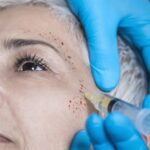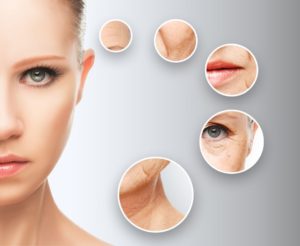Vampire facial and vampire facelift sounds similar. Right? Both involve Platelet Rich Plasma injections (PRP), but the procedure and results are pretty different.
What is Platelet Rich Plasma?
It is a magic ingredient that is obtained from your own blood. First, an expert physician takes a blood sample from you and processes it in a centrifuge. It will separate out blood cells, stem cells, and growth factors in different layers. Then, the growth factors and stem cells are obtained and injected into several areas of the face (vampire facelift) or used in the micro-needling process (vampire facial).
What is a Vampire Facial?
For Vampire Facial, micro-needling is performed to create thousands of microscopic channels of different depths into the skin. The PRP serum is then applied to micro-needled areas. It allows the growth factors to reach deeper layers of skin where the cell growth occurs.
Vampire facial is very beneficial in creating a smooth skin texture and reduces pores and scars. In addition, it does not affect your facial volume, and no injections are involved.
The micro-needling triggers the already present collagen to heal the skin and when PRP penetrates to skin channels. It speeds up new collagen growth, helps fade fine lines, and improves overall skin quality.
The process is simple and does not require more than 30-40 minutes to complete. You will observe redness on the treated area that will go away within 1-2 days. Thus, you only need to get a vampire facial once or twice a year to maintain a youthful look.
The treatment has no chance of any allergic reaction because the vital ingredient PRP is obtained from your own blood.
The suitable candidates for vampire facial are those who suffer from acne scars, hyperpigmentation, dry skin, rough texture, fine lines, or are afraid to get PRP injections. Patients with blood-related disorders are not the ideal candidate for the procedure.
What is a Vampire Facelift?
Like the vampire facial, it involves using PRP combined with hyaluronic acid filler such as Juvéderm or Restylane. First, the filler is injected into the areas with deeper wrinkles and fine lines. Then PRP serum is injected into the filler site to increase the volume.
Vampire facelift is ideal for patients who want to gain the lost volume and add youthful height and curves to their cheeks. The treatment lifts and adds volume as PRP builds the collagen fibers to support new volume.
The facial appearance after the vampire facelift is mild. The swelling and redness are minimal that disappear within 2-3 days. You will likely see the results after 2-3 weeks of treatment. The skin condition will continue to improve for up to 3-4 months. The results will last for 12-18 months.
The ideal candidates for vampire facelift are middle-aged individuals with mild to moderate wrinkles around the eyes, nose, lips, and mouth. However, it is not recommended to treat the severe signs of aging and pregnant/breastfeeding women.
Which Treatment, Vampire Facial or Vampire Facelift You Should Go For?
While both treatments produce stunning results, each has its own set of unique characteristics and benefits. Therefore, choosing the treatment depends on your specific concerns, goals, and other factors. To avoid confusion, consult a knowledgeable, experienced, and qualified provider.
The consultation allows you to understand your needs, aims, and interests fully. Asking questions will enable you to learn more about your medical history and skin problems so you can get the proper treatment or combination of treatments to attain your desired results.
For more information about vampire facial or vampire facelift, consult James Christian Cosmetics. James Christian is an authorized vampire facelift professional, injectable expert, and certified Galderma Trainer. Do not spend another day feeling discouraged or depressed about your looks; call or text us today!
*Information in this article is not medical advice and may not be factually accurate. It is intended for entertainment purposes only. Consult with a physician before attempting any tips in this blog post and to get the most up to date factual data about any procedure or treatment.













